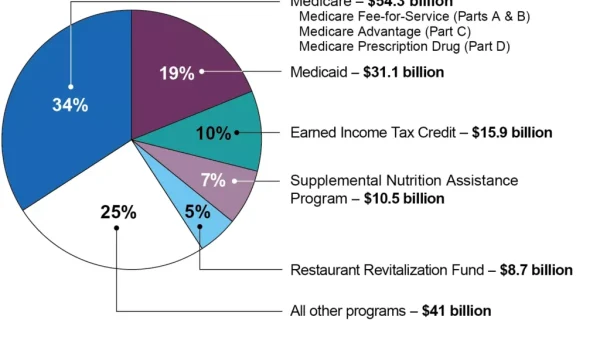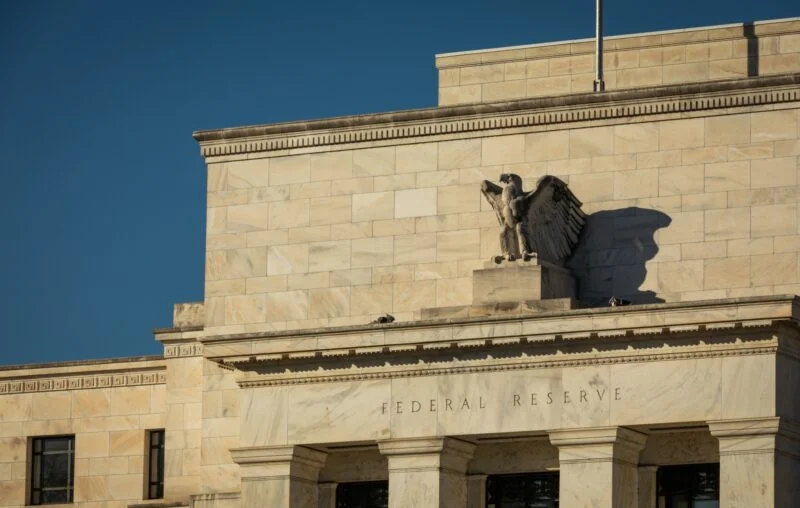The Federal Open Market Committee (FOMC) voted to hold its federal funds rate target at 5.25 to 5.5 percent on Wednesday, marking twelve months with the rate pegged to its current level. The FOMC also hinted in its statement that it could soon start cutting rates.
At the post-meeting press conference, Federal Reserve Chair Jerome Powell said the FOMC has “made no decisions about future meetings, and that includes the September meeting.” But he made a September rate cut seem likely:
The broad sense of the Committee is that the economy is moving closer to the point at which it will be appropriate to reduce our policy rate. In that, we will be data dependent, but not data point dependent — so it will not be a question of responding specifically to one or two data releases. The question will be whether the totality of the data, the evolving outlook in the balance of risks are consistent with rising confidence on inflation and maintaining a solid labor market. If that test is met, a reduction in our policy rate could be on the table as soon as the next meeting in September.
Powell noted that the FOMC did not revise its economic projections — including those for the federal funds rate — at this week’s meeting. Consequently, he was somewhat limited in providing more explicit forward guidance.
Some believe the Fed should have already started cutting rates. Inflation has declined considerably since the Fed began tightening in 2022. The Personal Consumption Expenditures Price Index grew 7.1 percent over the 12-month period ending June 2022. It grew 3.2 percent over the 12-month period ending June 2023 and 2.5 percent over the last 12 months. As I have previously warned, the FOMC risks passively tightening monetary policy further by holding its target rate constant in the face of falling inflation.
Others reject the idea that the Fed deserves credit for lower inflation, and worry that the central bank will now fall short of getting inflation all the way back down to 2 percent.
In a recent Wall Street Journal opinion piece, Steven Davis credits labor market developments — not monetary policy — with the decline in inflation.
It was no slide down the Phillips curve of the sort that textbooks attribute to tighter monetary policy. Instead, inflation fell 6 percentage points as unemployment stayed low. It is thus a mistake to credit this episode to the Federal Reserve’s departure from low interest rates.
The timing is also wrong for a story that credits the central bank. From March 2022 to July 2023, the Fed raised its policy rate by 5 points. That’s a lot of tightening, but Milton Friedman taught us that monetary policy operates with “long and variable lags.” For inflation, the lags usually range from nine months to two years.
The Fed got lucky, in other words, that labor market developments occurred when they did. Otherwise, inflation might still be high. But the Fed “shouldn’t bet on more good luck,” Davis says.
I disagree with Mr. Davis. The robust labor market and prompt disinflation he cites does not imply that monetary policy played little role. To the contrary, his observations are entirely consistent with a tight-money view that takes expectations into account.
Following the critiques levied by Milton Friedman and Edmund Phelps in the late 1960s, economists have stressed the importance of expectations when considering the relationship between inflation and unemployment. Although tighter monetary policy will reduce inflation and increase unemployment if it is unexpected, only the former occurs when the public anticipates the policy change and makes their employment decisions accordingly. Similarly, the long and variable lags that are typically associated with monetary policy depend on the speed with which individuals anticipate policy changes and adjust their behavior. As Federal Reserve Board Governor Christopher Waller explained in a speech last summer, “large changes in interest rates will get a lot of attention and have a much faster and dramatic impact on consumption, saving and portfolio allocation.”
When the Fed began hiking rates in March 2022, its decision didn’t come as a surprise. It had signaled to markets months earlier that it would soon begin raising rates. The surge in inflation focused attention on the Fed — and the Fed used that attention to anchor expectations.
The labor market developments Mr. Davis identifies may explain some of the disinflation observed over the last two years. But it is certainly not the full story. Nominal spending growth declined from 11.3 percent in 2021 to 6.9 percent in 2022 and 5.7 percent in 2023. Labor market developments cannot explain the decline in nominal spending growth. Tighter monetary policy can.
The primary risk now is not that the Fed will do too little to bring down inflation, as Mr. Davis fears. Rather, it is that the Fed will do too much. The PCEPI grew at an annualized rate of just 0.9 percent in June 2024 and 1.5 percent over the last three months. Given the lags of monetary policy, the Fed may have already undershot its target.
























